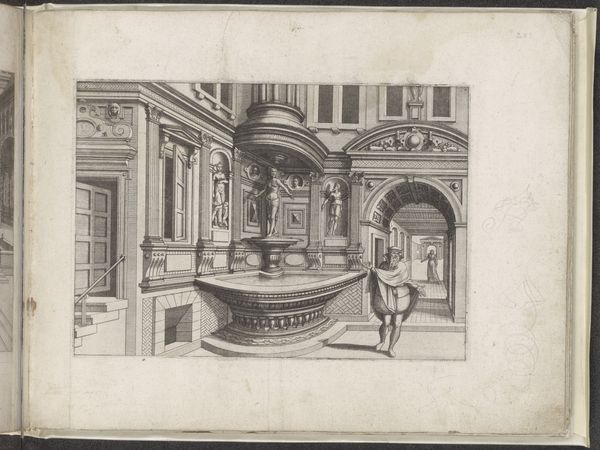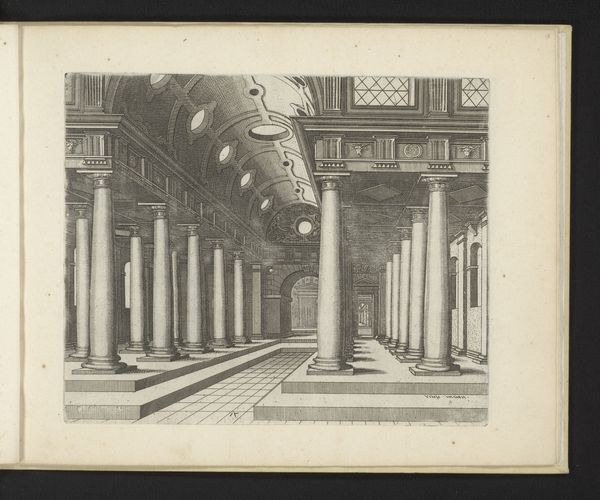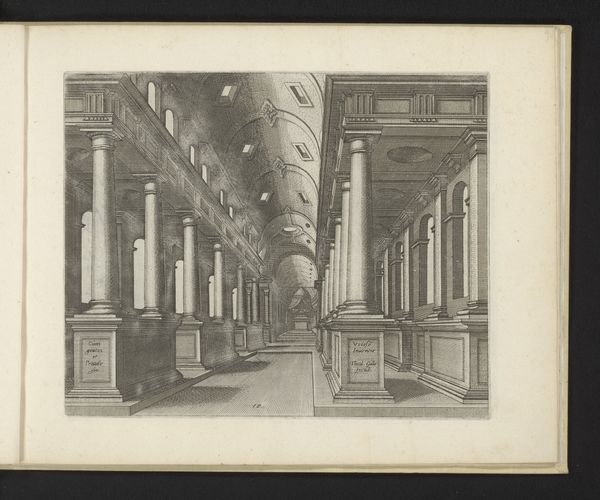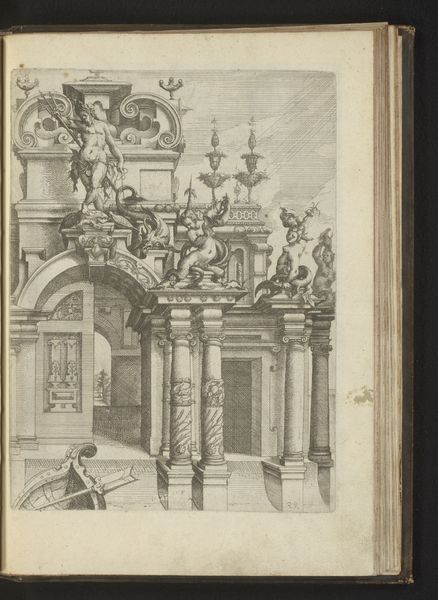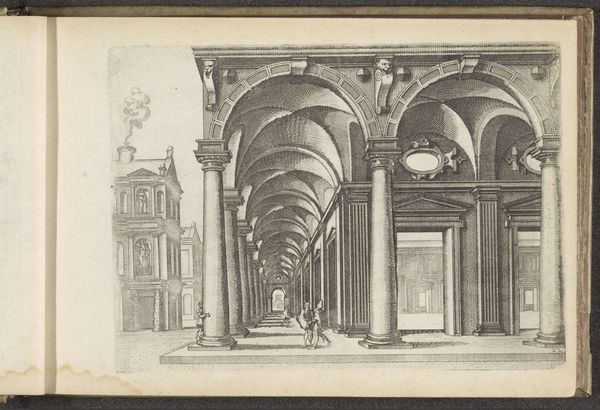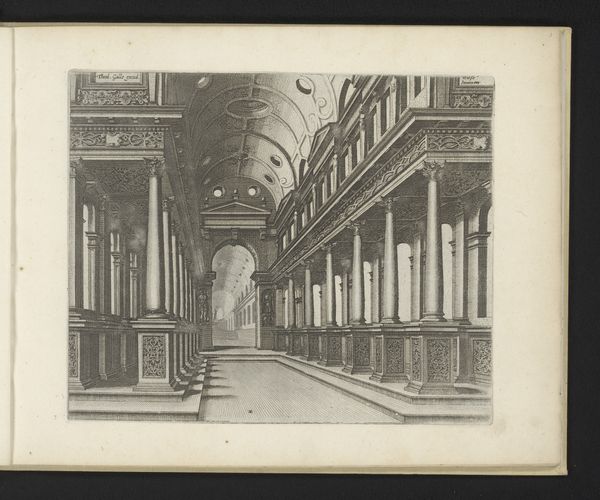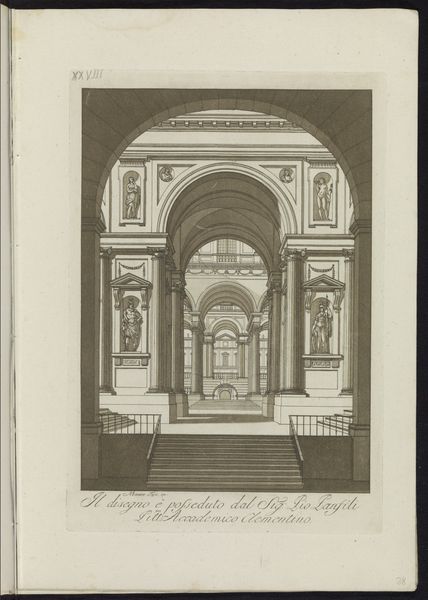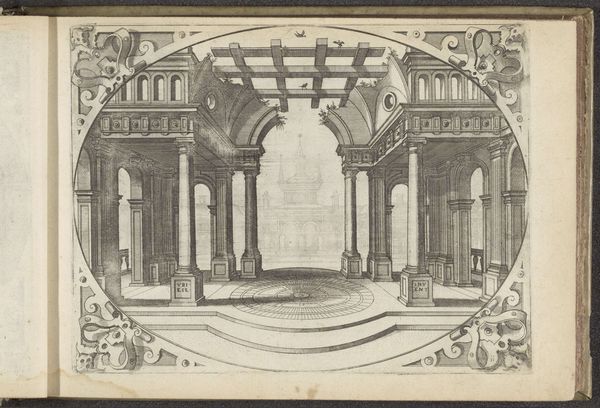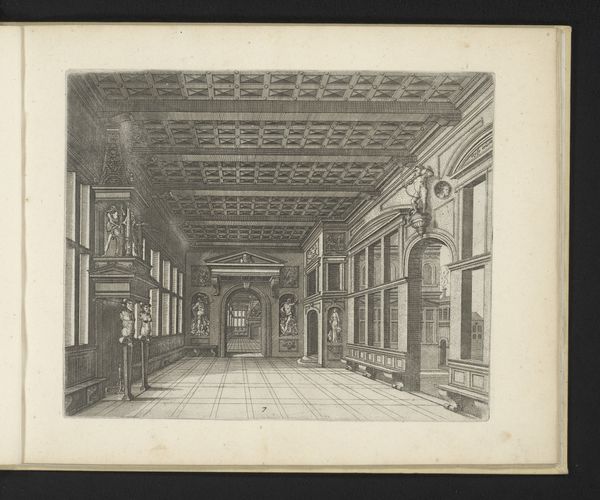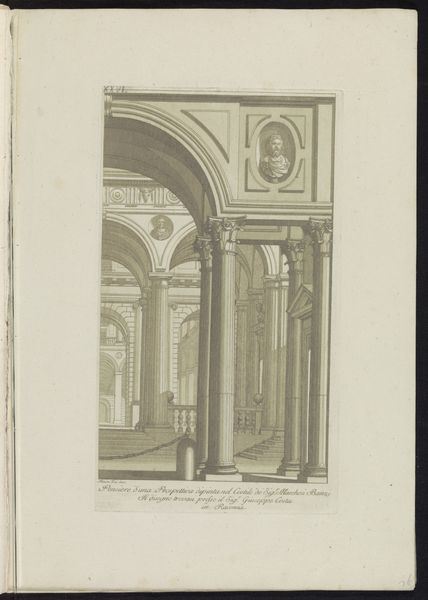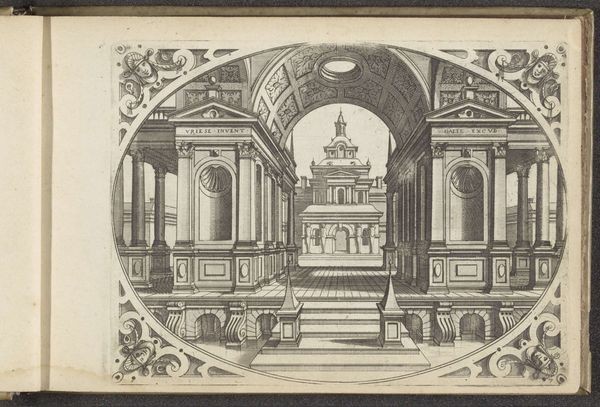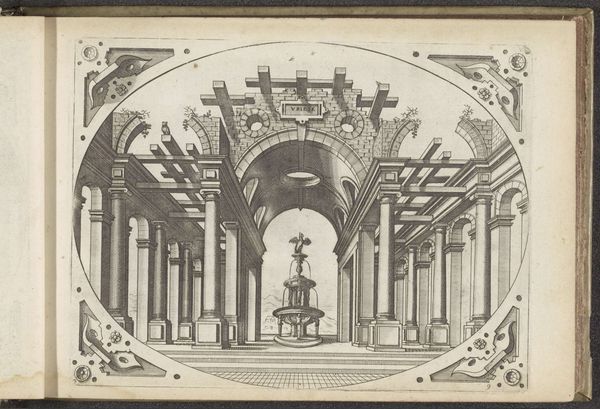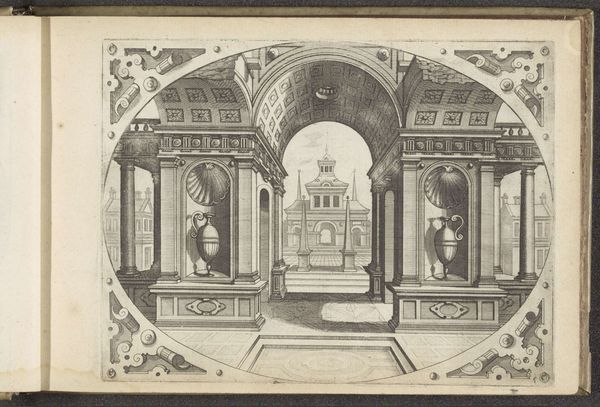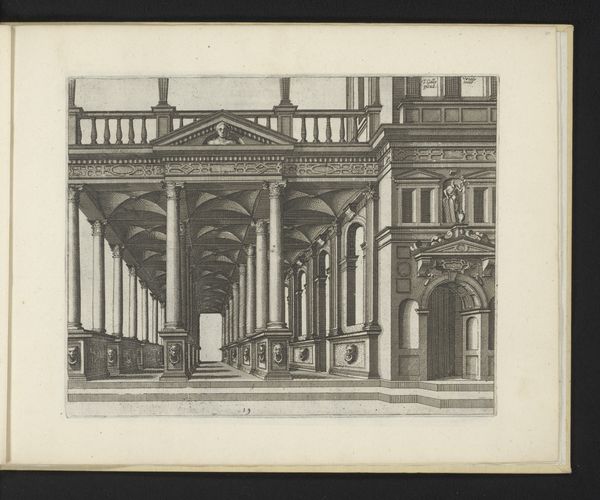
Zicht in een kerk met standbeelden van Apollo en Melpomene 1601
0:00
0:00
johannesoflucasvandoetechum
Rijksmuseum
print, engraving
#
baroque
# print
#
landscape
#
classical-realism
#
figuration
#
engraving
Dimensions: height 208 mm, width 258 mm
Copyright: Rijks Museum: Open Domain
Curator: Immediately, I sense a very rigid, staged atmosphere, like a theater set waiting for a drama to unfold. The stark light emphasizes the strong geometry of the place, yet I am somehow not entirely sure where I'm at, but very much feel how everything is designed. Editor: Indeed. What we're looking at is entitled "View of a Church with Statues of Apollo and Melpomene". This engraving, dating back to 1601, is attributed to Johannes or Lucas van Doetechum. It's currently held here at the Rijksmuseum. Curator: Ah, yes! Apollo and Melpomene, god of music, poetry and dance alongside the muse of tragedy. That juxtaposition speaks volumes. They’re positioned almost as if guarding or embodying opposing aspects of the sacred space. Do you agree? Editor: I think what's particularly striking is the manipulation of perspective here. It appears to depict a grand architectural space, possibly inspired by Renaissance interpretations of classical structures, but ultimately, this feels more like an idea of a space than a representation of one. The very act of placing these Greco-Roman figures in this context hints at a humanist, early Baroque interpretation. Curator: Right. I find myself contemplating that seemingly endless recession of columns; they call to mind repeated symbols of past glory. There’s something very unsettling in the sheer repetition and order. It doesn’t inspire serenity for me. Perhaps the work's success in conveying this emotional paradox makes it interesting beyond just its historical depiction? Editor: Absolutely. It encapsulates the transition from Renaissance idealism toward a more complex, stylized vision, a trend echoed across early 17th-century Europe. What do you think this image conveyed at the time? It's something of a symbolic landscape... Curator: It may have offered both learned viewers and the common faithful a view of the ideal architectural setting - what values one hopes the institution embodies - in ways that a painted commission couldn't. By contrasting deities related to inspiration with a house of Christian worship, the image asks who belongs and how! I really like this subversion. Editor: On my side, considering the role of engravings in disseminating ideas and styles at the time, it might represent how emerging cultural tastes engaged with architectural theory in a tangible manner. It allowed broader participation and challenged contemporary standards in both design and religion. Curator: It does present an enduring reflection on the complexities of how tradition and modernity coexist within shared spaces. Thank you for sharing your own views! Editor: The pleasure was mine, and thank you for unraveling the many threads in this church setting.
Comments
No comments
Be the first to comment and join the conversation on the ultimate creative platform.
